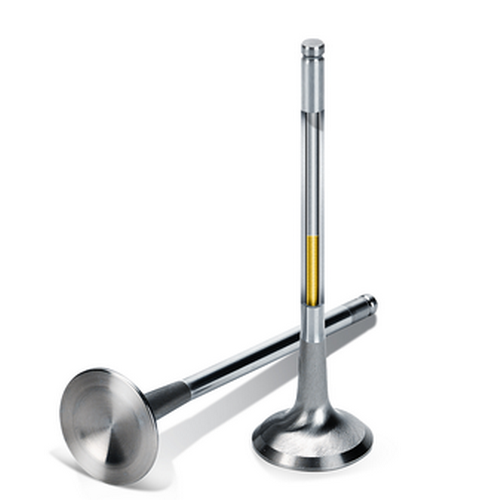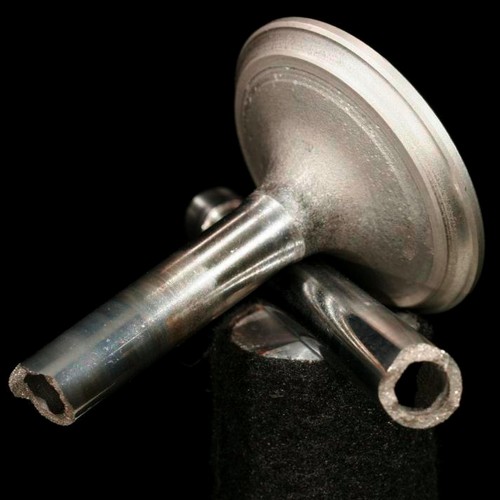Engine valves filled with sodium-TV: for which it serves?

You may have heard that gasoline engines, especially cars with lots of power, using valves with a sodium. Why?
The valves are thermally most stressed components of the internal combustion engine more preciselycylinder heads. As the valve stem, which moves in the guide rail in the cylinder head, still good cooling fluid flowing into the cylinder head, possibilities for cooling the valve head is quite limited.
The solution is to double
Precisely exhaust valves must withstand significant heat load due to the flow of hot exhaust gas from the cylinder in the exhaust pipe. There are several solutions to reduce their temperature.
The first used the so-called bimetallic exhaust valves. They also have the valve stem welded to the head of the valve, which is made from other materials. Commonly used nickel-alloy steel, so-called Nimonic. furthermore, use the technology in which the sealing surface of the valve in the cylinder head (ie. seat) Tungsten carbide tipped (stelit). This leads to less spending.

What is the temperature of exhaust valves
The best design of measures to reduce the temperature of exhaust
the valve is to be hollow. Cavity may have not only tree, but the head
valve. But as the temperature of the valve varies depending on the design?
With a full valve, its temperature can easily reach
750 stepeni. If the valve has only hollow shaft, it will fall to around 100
stepeni. If the head is hollow, temperature valve will, on average, only slightly
surpass 600 stepeni.
Sodium as a "shaker"
The best cooling is achieved when the cavities are filled with sodium stem. When cold, of sodium in the tree is gaseous, or to the valve heats, its gaseous state becomes fluent. This happens already at a temperature of about 100 stepeni, thus providing a cooling effect at low temperatures valve.
And how it all works? at the same time, dropwise sodium reduces the volume of the cavity of the valve. Both liquid sodium only partially fills the cavity of the valve stem. as a result of, liquid sodium in the cavity of the valve stem can move through the handle – of the valve head to the opposite side, ie. to handle. With this gesture, sodium transfers heat from the hot valve head to the handle. This is, wherein the valve is already cooled by the cooling channel in the cylinder head. So it actually works as sodium shaker. Removes heat from the valve head and then is transferred to the cooling of the cylinder head.
And that engines use valve engine filled with sodium? mostly strongergasoline engines, which usually has a higher temperature exhaust gases than diesel engine.

Hi there, I am Mladen and I am an auto enthusiast. I started this blog years ago to help like minded people share information about latest cars, car servicing ideas, used car info, exotic cars, and auto technology. You will find helpful articles and videos on a wide variety of cars – Audi, Mercedes, Toyota, Porsche, Volvo, BMW and much more. Ping us if you have anything cool to share on latest cars or on how to make older cars more efficient, or just want to say hi!
